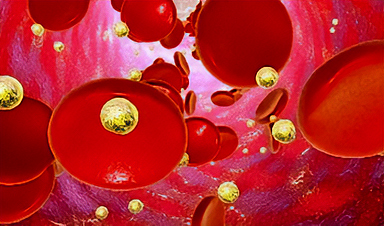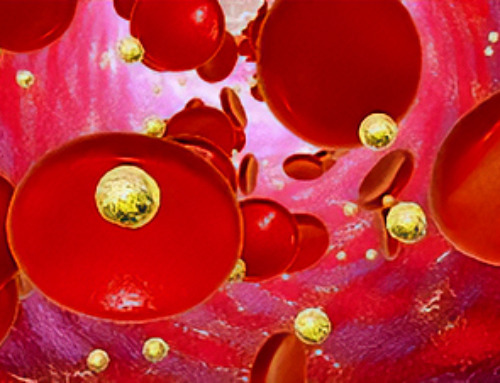A team from the University of Geneva (UNIGE) has devised a novel method for customizing treatments by testing them on artificial tumors.
Determining the optimal treatment for colon cancer can be challenging as each patient’s response to chemotherapy varies considerably. Researchers from the University of Geneva (UNIGE) have developed an innovative method to test various drugs without using the patient’s body or conducting animal experiments. Instead, they utilized organoids, tiny replicas of organs and tissues derived from the patients themselves, and exposed these to the treatments.
The outcomes of these experiments were then compiled into a model. This method paves the way for personalized and enhanced treatments against different types of cancer and a host of other illnesses. The findings were recently published in the Journal of Experimental & Clinical Cancer Research.
With more than 1.4 million people affected each year – 700,000 of them fatally – colorectal cancer is the third most diagnosed cancer in the world and the second most deadly, just after lung cancer. Its treatment is based primarily on a combination of chemotherapies called FOLFOXIRI. However, its effectiveness varies from patient to patient and its side effects are significant. It also leads to progressive drug resistance in most patients.
Almost like organs
‘‘These micro-tissues are not organs as such,’’ explains George M. Ramzy, a post-doctoral researcher in the School of Pharmaceutical Sciences at the Faculty of Science of the UNIGE and first author of the study. ‘‘They have some important physiological differences, such as not having vascular or nervous systems. However, they are very effective models for testing treatments.’’
The researchers started with cancer tissue taken from untreated patients at the Geneva University Hospitals (HUG). By cultivating stem cells from these tissues – which gradually divided and organized themselves into three-dimensional structures – the scientists were able to produce organoids, or tumoroids, from each patient’s tumor.
‘‘We then tested different drugs on these models, without knowing their genetic background,’’ explains Patrycja Nowak-Sliwinska. This individual background largely determines the effectiveness of the treatments. The researchers, therefore, started from scratch, basing their entire study on the observation of the cells’ response in real-time.
Fast, effective, and customized
These tumor avatars were exposed to a range of seven treatments currently in clinical use. Depending on the response of each patient organoid, the combination, and dosages of these treatments were adapted. All results were mathematically modeled to predict the optimal efficacy and doses for each organoid, i.e. for each patient. These tests were carried out over two weeks. ‘‘This is a clinically relevant time frame: it is the time frame currently needed by the medical profession to choose a treatment after diagnosis,’’ says Patrycja Nowak-Sliwinska.
Thanks to a collaboration between the UNIGE research laboratory and the EPFL, the researchers were then able to determine the stage of each patient’s tumor and the main mutations involved in the progression of the disease. This information is relevant and essential to better understand the choice and mechanism of action of each drug combination. ‘‘Each patient is different and requires a specific treatment,’’ adds Patrycja Nowak-Sliwinska.
This innovative approach, without animal models, has just been patented. It offers personalized treatment for many forms of cancer, but also for other diseases such as cardiovascular or viral diseases. Trials are underway for renal cancer. For the research team, the next step will be to work on organoids from pre-treated colon cancer tumors, which therefore show signs of resistance. The aim will also be to shorten the duration of the optimization process.
News
Nanocrystals Carrying Radioisotopes Offer New Hope for Cancer Treatment
The Science Scientists have developed tiny nanocrystal particles made up of isotopes of the elements lanthanum, vanadium, and oxygen for use in treating cancer. These crystals are smaller than many microbes and can carry isotopes of [...]
New Once-a-Week Shot Promises Life-Changing Relief for Parkinson’s Patients
A once-a-week shot from Australian scientists could spare people with Parkinson’s the grind of taking pills several times a day. The tiny, biodegradable gel sits under the skin and releases steady doses of two [...]
Weekly injectable drug offers hope for Parkinson’s patients
A new weekly injectable drug could transform the lives of more than eight million people living with Parkinson's disease, potentially replacing the need for multiple daily tablets. Scientists from the University of South Australia [...]
Most Plastic in the Ocean Is Invisible—And Deadly
Nanoplastics—particles smaller than a human hair—can pass through cell walls and enter the food web. New research suggest 27 million metric tons of nanoplastics are spread across just the top layer of the North [...]
Repurposed drugs could calm the immune system’s response to nanomedicine
An international study led by researchers at the University of Colorado Anschutz Medical Campus has identified a promising strategy to enhance the safety of nanomedicines, advanced therapies often used in cancer and vaccine treatments, [...]
Nano-Enhanced Hydrogel Strategies for Cartilage Repair
A recent article in Engineering describes the development of a protein-based nanocomposite hydrogel designed to deliver two therapeutic agents—dexamethasone (Dex) and kartogenin (KGN)—to support cartilage repair. The hydrogel is engineered to modulate immune responses and promote [...]
New Cancer Drug Blocks Tumors Without Debilitating Side Effects
A new drug targets RAS-PI3Kα pathways without harmful side effects. It was developed using high-performance computing and AI. A new cancer drug candidate, developed through a collaboration between Lawrence Livermore National Laboratory (LLNL), BridgeBio Oncology [...]
Scientists Are Pretty Close to Replicating the First Thing That Ever Lived
For 400 million years, a leading hypothesis claims, Earth was an “RNA World,” meaning that life must’ve first replicated from RNA before the arrival of proteins and DNA. Unfortunately, scientists have failed to find [...]
Why ‘Peniaphobia’ Is Exploding Among Young People (And Why We Should Be Concerned)
An insidious illness is taking hold among a growing proportion of young people. Little known to the general public, peniaphobia—the fear of becoming poor—is gaining ground among teens and young adults. Discover the causes [...]
Team finds flawed data in recent study relevant to coronavirus antiviral development
The COVID pandemic illustrated how urgently we need antiviral medications capable of treating coronavirus infections. To aid this effort, researchers quickly homed in on part of SARS-CoV-2's molecular structure known as the NiRAN domain—an [...]
Drug-Coated Neural Implants Reduce Immune Rejection
Summary: A new study shows that coating neural prosthetic implants with the anti-inflammatory drug dexamethasone helps reduce the body’s immune response and scar tissue formation. This strategy enhances the long-term performance and stability of electrodes [...]
Scientists discover cancer-fighting bacteria that ‘soak up’ forever chemicals in the body
A family of healthy bacteria may help 'soak up' toxic forever chemicals in the body, warding off their cancerous effects. Forever chemicals, also known as PFAS (per- and polyfluoroalkyl substances), are toxic chemicals that [...]
Johns Hopkins Researchers Uncover a New Way To Kill Cancer Cells
A new study reveals that blocking ribosomal RNA production rewires cancer cell behavior and could help treat genetically unstable tumors. Researchers at the Johns Hopkins Kimmel Cancer Center and the Department of Radiation Oncology and Molecular [...]
AI matches doctors in mapping lung tumors for radiation therapy
In radiation therapy, precision can save lives. Oncologists must carefully map the size and location of a tumor before delivering high-dose radiation to destroy cancer cells while sparing healthy tissue. But this process, called [...]
Scientists Finally “See” Key Protein That Controls Inflammation
Researchers used advanced microscopy to uncover important protein structures. For the first time, two important protein structures in the human body are being visualized, thanks in part to cutting-edge technology at the University of [...]
AI tool detects 9 types of dementia from a single brain scan
Mayo Clinic researchers have developed a new artificial intelligence (AI) tool that helps clinicians identify brain activity patterns linked to nine types of dementia, including Alzheimer's disease, using a single, widely available scan—a transformative [...]




















